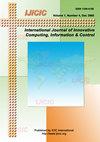利用机器学习预测二氧化碳排放量
IF 1.1
Q4 COMPUTER SCIENCE, ARTIFICIAL INTELLIGENCE
International Journal of Innovative Computing Information and Control
Pub Date : 2022-11-20
DOI:10.11113/ijic.v12n2.369
引用次数: 0
摘要
全球变暖给人类、社会和环境带来了严重的影响和后果。虽然有各种各样的活动导致全球变暖,但主要的贡献者是二氧化碳(CO2)排放。人类活动通过燃烧化石燃料,如石油、天然气或煤炭来生产能源,释放出大量的二氧化碳。净零排放是工业平衡环境中二氧化碳排放的新目标。因此,本研究利用1991年至2020年二氧化碳排放数据集的机器学习模型找到了最佳的二氧化碳排放预测模型。机器学习技术是研究二氧化碳排放预测的一种有效方法,目前已经引起了一些研究的关注。将数据集分成训练集-测试集(估计-验证)集,训练集占80%,测试集占20%(80:20)。利用随机森林、支持向量机和人工神经网络等不同参数的算法建立预测模型,得到预测结果。基于平均绝对误差(MAE)、均方根误差(RMSE)和平均绝对百分比误差(MAPE)的误差测量指标对预测模型的性能进行评估。结果表明,具有线性核函数的支持向量机在训练集上的平均绝对误差(MAE)为65.7254,均方根误差(RMSE)为112.2196,平均绝对百分比误差(MAPE)为0.2279%,是其中最好的模型。对于致力于净零碳排放的行业,该分析将成为预测系统的建议因素,以确定二氧化碳排放量以及到2050年实现净零碳排放需要减少多少化石燃料。本文章由计算机程序翻译,如有差异,请以英文原文为准。
Predicting the Carbon Dioxide Emissions Using Machine Learning
There are severe impacts and consequences to humans, societies, and the environment due to global warming. Though there are various activities that contributes to global warming, the major contributor is carbon dioxide (CO2) emissions. Human activities release large amounts of carbon dioxide from the burning of fossil fuels, such as oil, gas, or coal in producing energy. Net zero is the new ambition of industries in balancing the CO2 emissions in environment. Thus, this study finds the best predictive model for CO2 emissions using machine learning model with the dataset of CO2 emissions from 1991 until 2020. Machine Learning techniques is an efficient approach to study the CO2 emissions prediction and has been very appealing to few research. The dataset is split into a train-test (estimation-validation) set with 80% train set and 20% test set (80:20) proportion. The predictive model was developed using Random Forest, Support Vector Machine and Artificial Neural Network algorithms with different parameters to get the outcome. The predictive model's performance was evaluated based on the error measurement metric of Mean Absolute Error (MAE), Root Mean Square Error (RMSE), and Mean Absolute Percentage Error (MAPE). Its reveals that Support Vector Machine with linear kernel function is the best model among others which produces 65.7254 Mean Absolute Error (MAE), 112.2196 Root Mean Square Error (RMSE) and 0.2279% Mean Absolute Percentage Error (MAPE) from the train set. For industries committed to net zero carbon emissions, this analysis will be an advising factor on the prediction system to find the CO2 emissions and how much fossil fuels’ reduction is required in achieving net zero carbon emission by 2050.
求助全文
通过发布文献求助,成功后即可免费获取论文全文。
去求助
来源期刊
CiteScore
3.20
自引率
20.00%
发文量
0
审稿时长
4.3 months
期刊介绍:
The primary aim of the International Journal of Innovative Computing, Information and Control (IJICIC) is to publish high-quality papers of new developments and trends, novel techniques and approaches, innovative methodologies and technologies on the theory and applications of intelligent systems, information and control. The IJICIC is a peer-reviewed English language journal and is published bimonthly

 求助内容:
求助内容: 应助结果提醒方式:
应助结果提醒方式:


